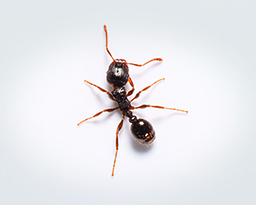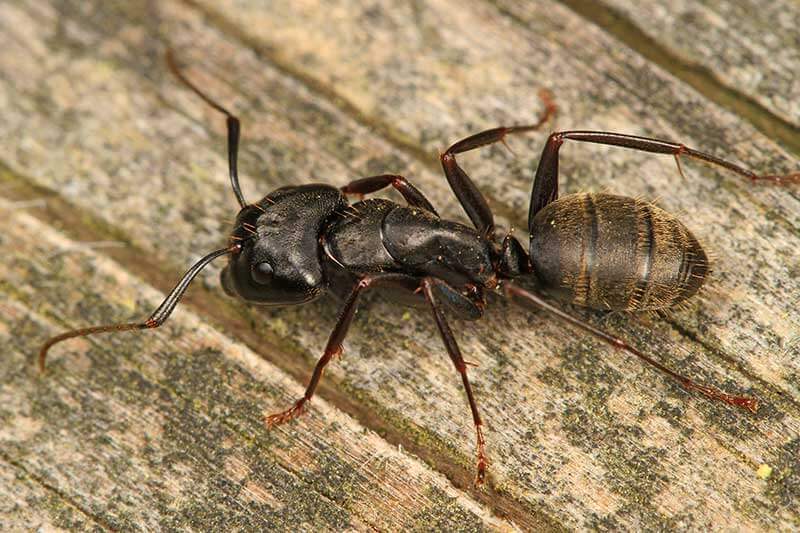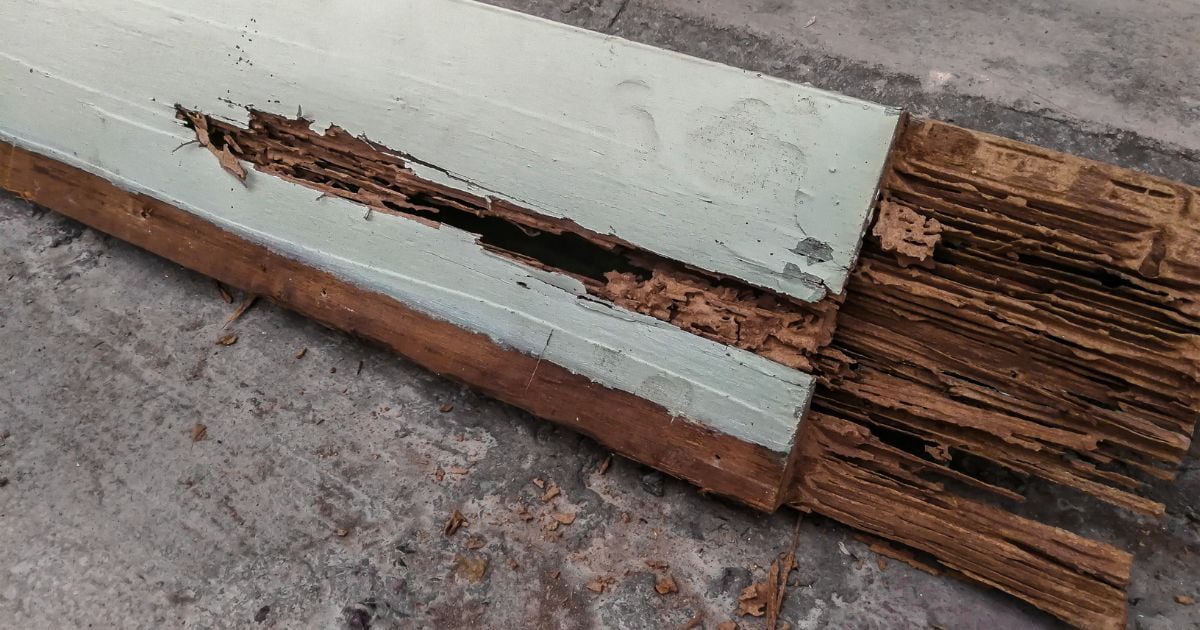Yes, ants can cause structural damage by tunneling through wood, compromising the integrity of buildings. These tiny pests can weaken structural elements like beams and foundations, leading to potential safety hazards and costly repairs.
While individually small, ant colonies can collectively create significant damage over time if left unchecked. Ensuring regular inspections and promptly addressing infestations can prevent the extent of harm caused by ants to your property. We will explore the risks associated with ants damaging structures, the types of damage they can cause, and effective prevention and control measures to safeguard your home or building.
Let’s delve deeper into how these seemingly insignificant creatures can have a major impact on the structural stability of your property.
The Impact Of Ants On Structures
Discovering ants in or around your home may seem like a minor nuisance, but these tiny creatures can actually pose a serious threat to the structural integrity of buildings. The Impact of Ants on Structures can lead to costly repairs and potential safety hazards. Understanding the types of ants that cause structural damage, recognizing signs of infestation, and knowing how ants damage structures is crucial for maintaining the long-term stability of your property.
Types Of Ants That Cause Structural Damage
Carpenter ants, red imported fire ants, and raspberry crazy ants are the three main types of ants that can cause significant structural damage. Carpenter ants, known for excavating wood to create nest galleries, are particularly destructive to homes. Red imported fire ants can build colonies under slabs, walkways, and foundations, leading to soil erosion and damage. Meanwhile, raspberry crazy ants are attracted to electrical equipment and can cause malfunctions in devices, posing a hazard to buildings.
Signs Of Ant Infestation In Structures
- Visible ant trails inside the property or around the foundation.
- Wood shavings or sawdust-like material near wooden structures, as a result of carpenter ant activity.
- Swarms of winged ants emerging from the building, a sign of mature ant colonies producing new queens and males for reproduction.
- Presence of ant mounds, particularly characteristic of red imported fire ants.
How Ants Damage Structures
Ants can damage structures in several ways. Carpenter ants hollow out wood, potentially weakening the support beams and causing structural instability. Red imported fire ants can disrupt soil structure and potentially damage the foundation of a building, leading to sinking or cracking. Rasberry crazy ants are known to short-circuit electrical systems, including air conditioning units, gates, and security systems, posing a risk of fire and safety hazards.
Prevention And Control Of Ant Infestation
Ant infestations can potentially cause structural damage to buildings if left unchecked. However, with proper prevention and control measures, it is possible to keep ants at bay and protect your property.
Keeping Structures Clean And Dry
To prevent ant infestations, maintain cleanliness and dryness in and around your property. Regularly clean up crumbs, spills, and food debris. Ensure proper ventilation to reduce moisture that attracts ants.
Sealing Entry Points
Seal all cracks and crevices in walls, floors, and foundations to prevent ants from entering your home. Check doors, windows, and utility openings for any gaps that need to be sealed.
Removing Food Sources
Eliminate attractants by keeping food items in sealed containers. Dispose of garbage regularly and clean up spills promptly. Avoid leaving pet food out overnight.
Professional Ant Control Methods
- Seek professional help for persistent ant infestations.
- Exterminators can employ targeted treatments to eradicate ant colonies.
- Regular inspections and treatments can help maintain ant-free properties.
Common Misconceptions About Ants And Structural Damage
When it comes to ants and structural damage, there are several misconceptions that often lead to confusion and oversight. It’s crucial to understand the facts to address potential issues effectively.
Ants Vs Termites: Different Levels Of Structural Damage
Ants and termites may seem similar, but they cause different levels of structural damage. While termites can quickly destroy wood, ants usually create smaller, more manageable damage.
Ants And Wood-destroying Fungi
Ant infestations can lead to the growth of wood-destroying fungi, exacerbating structural damage. This symbiotic relationship between ants and fungi often goes unnoticed, resulting in underestimated harm.
The Role Of Moisture In Ant Infestation
Moisture is a significant factor in ant infestation and subsequent structural damage. It provides ideal conditions for ants to thrive and cause harm to the building’s integrity. Addressing moisture issues is crucial in preventing ant-related problems.

Credit: www.arrowexterminators.com
The Economic Impact Of Ant Infestation
Ant infestations can potentially lead to structural damage in homes and buildings. The economic impact of ant infestation stems from structural repairs and property devaluation. It is crucial to address ant problems promptly to prevent costly damage.
The Economic Impact of Ant InfestationAnt infestations can have a significant economic impact on both residential and commercial properties. The costs associated with repairing structural damage, decreased property value, and potential risks to human health can add up quickly.Repair and Maintenance Costs Ants can cause significant damage to the structure of a building by tunneling through wood, insulation, and even electrical wiring. Repairing this damage can be costly, requiring the replacement of damaged materials and hiring professional pest control services.Decreased Property Value The presence of ants can lead to a decrease in the value of a property as potential buyers may be deterred by the infestation. This can pose challenges for property owners looking to sell or rent their homes or commercial spaces.Risk to Human Health Ants can also pose a risk to human health, particularly in the case of fire ants or carpenter ants. Fire ants can cause painful stings, while carpenter ants can trigger allergies in some individuals. These health risks can result in additional medical expenses and lost productivity.In conclusion, the economic impact of ant infestations should not be underestimated. Repair and maintenance costs, decreased property value, and the potential risks to human health can all take a toll on property owners and businesses. It’s crucial to address ant infestations promptly and effectively to mitigate these economic impacts.Case Studies: Notable Instances Of Ant Infestation
Ant infestations are not limited to residential properties; they can also pose a threat to famous buildings and even cause structural damage. Several notable instances highlight the severity of ant infestations and the lessons we can learn from them. Let’s take a closer look at some of these case studies.
Famous Buildings Affected By Ant Infestation
The Sydney Opera House: One of Australia’s most iconic landmarks, the Sydney Opera House, fell victim to an ant infestation. The tiny invaders managed to infiltrate the building’s intricate structure, causing concerns about their impact on the stability of the iconic sails.
The Empire State Building: Even the towering Empire State Building in New York City dealt with a persisting ant problem. Despite its grandeur, the building’s interior was not immune to these tiny pests. Concerns were raised about the nuisance they caused and the potential harm they could inflict on the electrical systems.
Lessons Learned From Past Infestations
Prompt Action: In both instances, immediate action was required to address the ant infestations. It’s essential to promptly identify and tackle the issue before it leads to significant damage. Regular inspections and early intervention are key elements in the battle against ants.
Effective Ant Control: These case studies emphasize the importance of implementing effective pest control measures. Utilizing proven methods and expert assistance can help prevent ant infestations from progressing and causing costly structural damage.
Vigilance and Risk Assessment: The experiences of these famous buildings teach us to be vigilant when it comes to ant infestations. Conducting regular risk assessments and implementing preventive measures can go a long way in preserving the integrity of any structure.
In conclusion, the case studies mentioned above shed light on the potential threat that ant infestations pose to even the most famous buildings. Prompt action, effective pest control methods, and constant vigilance are crucial in preventing these tiny intruders from compromising the structural integrity of any property.

Credit: www.amdro.com
Environmental Implications Of Ant Control
Ant infestations may lead to structural damage by compromising the integrity of buildings. Their nesting activities within walls and foundations can weaken structures over time. It’s essential to address ant control promptly to prevent potential costly repairs and maintain the longevity of your property.
Eco-friendly Ant Control Methods
When it comes to pest control, many homeowners worry about the impact it may have on the environment. Ant control is no exception. Thankfully, there are several eco-friendly methods that can be employed to keep these tiny invaders in check without causing harm to the environment.
One of the most effective eco-friendly ant control methods is the use of natural repellents. By utilizing substances such as peppermint oil, vinegar, or citrus peels, you can deter ants from entering your home without introducing harmful chemicals into the environment. These natural repellents are safe to use around pets and children, making them an ideal solution for ant control.
Another eco-friendly option for ant control is the use of bait stations. These bait stations contain a non-toxic substance that attracts ants seeking food. Once the ants consume the bait, they carry it back to their colonies, effectively eliminating the entire nest. This method is not only effective but also minimizes the need for pesticide use.
The Importance Of Balance In Ecosystems
It is crucial to consider the importance of balance in ecosystems when implementing any form of pest control, including ant control. While ants may be a nuisance in our homes, they play a vital role in the environment. Ants are nature’s recyclers, feeding on dead plants and insects, thereby decomposing them and enriching the soil.
Additionally, ants have a symbiotic relationship with certain plants, aiding in their pollination and seed dispersal. They also help control the population of other pests by preying on them or competing for resources. These interactions underline the significance of maintaining a healthy and diverse ecosystem.
By choosing eco-friendly ant control methods, we can strike a balance between mitigating ant infestations and preserving the delicate equilibrium of our environment. It is crucial to remember that exterminating ants completely can disrupt the natural order of the ecosystem, potentially leading to unforeseen consequences.
Ants And Structural Damage Around The World
Ants may seem small, but they can cause significant structural damage to buildings and homes. Their presence in various global regions has led to unique challenges in addressing and preventing the impact of their infestations on the structural integrity of properties.
Global Regions Prone To Ant Infestation
Ant infestations can occur in different regions around the world due to varying environmental conditions.
- Tropical Regions
- Temperate Climates
- Desert Areas
- Urban Environments
Unique Species And Behaviors
Different species of ants exhibit varying behaviors that contribute to structural damage in distinct ways.
- Wood-Destroying Ant Species
- Moisture-Loving Ants
- Nest-Building Habits
:max_bytes(150000):strip_icc()/ants-on-table-getty-0122-2000-f98b19287b9949da8ec10af1e975345f.jpg)
Credit: www.marthastewart.com
Frequently Asked Questions Of Can Ants Cause Structural Damage
Can Ants Cause Structural Damage To Buildings?
Yes, ants can cause structural damage to buildings. They may tunnel through wood, weaken structures, and even create nests, which can compromise the integrity of a building over time. It’s important to address ant infestations promptly to prevent further damage to the structure.
Conclusion
Ants can indeed cause structural damage to homes and buildings. It’s important to be proactive in preventing infestations and addressing any signs of damage promptly. By understanding the habits and behaviors of ants, we can better protect our properties and maintain their integrity.
Stay vigilant and take necessary precautions to safeguard your structures from potential ant damage.

I’m MD Tanvir, and I bring years of expertise gained from working closely with pest control companies to the forefront. My journey in the industry has inspired me to launch Bug Battler, a platform aimed at equipping people with the know-how to combat pests autonomously. Through Bug Battler, I aim to empower individuals with practical insights to tackle pest infestations effectively.

